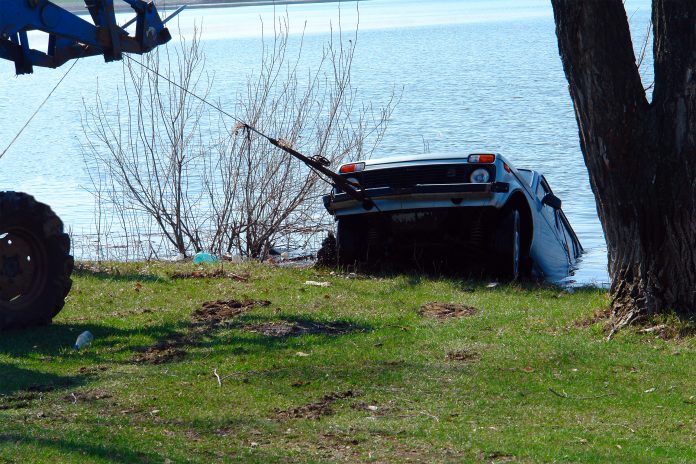There is nothing scarier than the prospect of being trapped inside your vehicle during flooding. What’s the best course of action? Should you stay in the vehicle, and wait for help to arrive? Or should you try and make your way out of your vehicle in the water?
It only takes 15 cm of surface water for the steering in your vehicle to start to fail. This makes it extremely difficult to maintain control of your vehicle. Just because surface water on the road appears shallow, doesn’t mean it isn’t dangerous.
Once the height of the surface water gets to one foot, your car will start to lose contact with the road and be gradually swept away by the current. At two feet, even heavy trucks and SUVs will get swept away.
If you ever find yourself in this situation follow these simple guidelines.
Make Yourself Noticeable
The very first thing you should do when you realise that you are losing control of your vehicle is to put on your hazard lights and headlights. This makes it easier for emergency services to find your vehicle.
Unlock Your Doors
As soon as you realize that the water around your vehicle is getting dangerously high, you should undo your seatbelt and unlock all your doors. This way you can quickly escape your vehicle if you need to.
Remove Extra Layers of Clothing
If you have to exit the car, you don’t want to be stuck in the deep water wearing heavy layers of clothing. If you’re wearing a sweatshirt along with a t-shirt, only wear your t-shirt and use your sweatshirt as a flotation device by plunging it under water and then filling it with air. The water creates a seal that traps the air in.
Open Windows
If your vehicle gets completely submerged in water it will be almost impossible to open a window. This is because of the pressure from the water surrounding your car.
As soon as you sense that the water around your vehicle is rising, open your window as far as you possibly can, and immediately swim out. Once you’ve left your vehicle, find some safe, high ground and call emergency services to assist you.
If You Can’t Open a Window
If the water surrounding your vehicle is already too high and you can’t get the windows open, immediately turn and remove your headrest from the seat of your car.
The spokes at the end of the headrest are designed to penetrate glass. Once you have smashed the glass you can then remove yourself from your vehicle and swim to safety.
Windows Open, Children Out
If you have children or pets, the FIRST thing you need to do is open the windows, THEN focus on the children. Undo their seatbelts and get them out of the car, eldest child first. Do NOT exit the car first as it becomes almost impossible to re-enter the car once you exit.
Leave Your Belongings Behind
Your life is far more important than any possessions within your vehicle. It’s very difficult to focus on swimming to safety with a bag or backpack weighing you down.
If the water level is low enough that it is safe to grab something, make your phone your number one priority. That way you can call for help from emergency services.
Don’t Try to Save Your Car
Even if the water around your vehicle is shallow, don’t think that you’ll be able to push your car to a safe location. As soon as you get out of your vehicle, find high ground as soon as possible. Flood waters can rise extremely quickly, and you don’t want to be caught trapped in or under your vehicle as they continue to rise.
How to Get Your Car Returned
Once the flood waters retreat, don’t be tempted to get back inside your vehicle, and drive away!
Simply call emergency services and allow them to tow your car to a safer location where you can survey the damage.
Simple Steps to Save Your Life
Learn to swim, you never know when you will need to use the skill. Make sure your children learn to swim.
Stay calm. If you remain calm, you’ll be able to remember what steps to take next, without getting flustered and stressed. Remember the main intention is for you to get out of your vehicle and find a place of higher ground and call emergency services for assistance.
Never sit and hope that the flood waters will recede. They are only going to continue to rise, making your situation more and more dangerous.






































